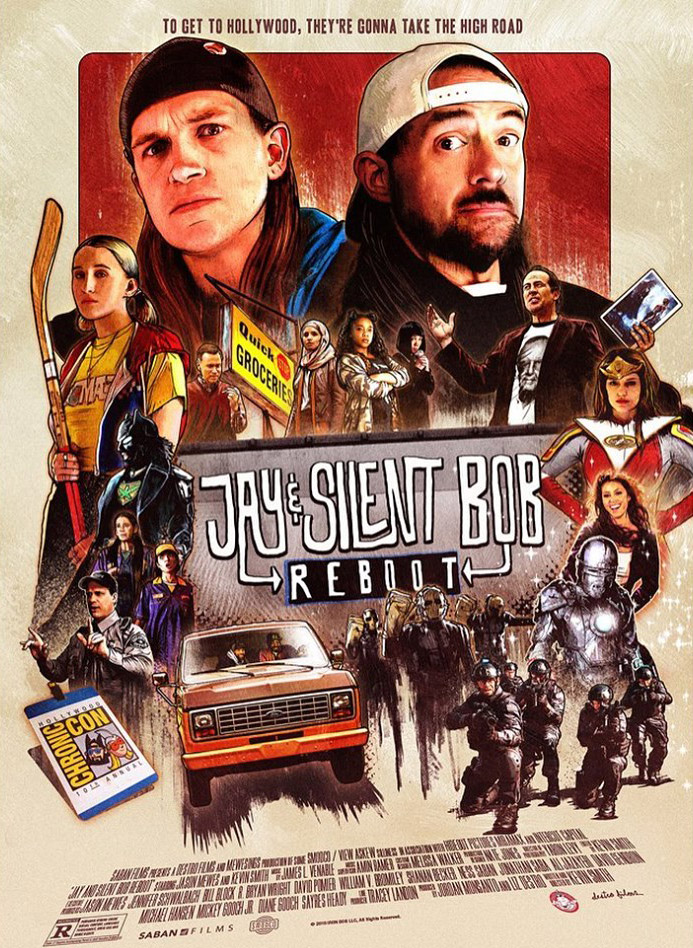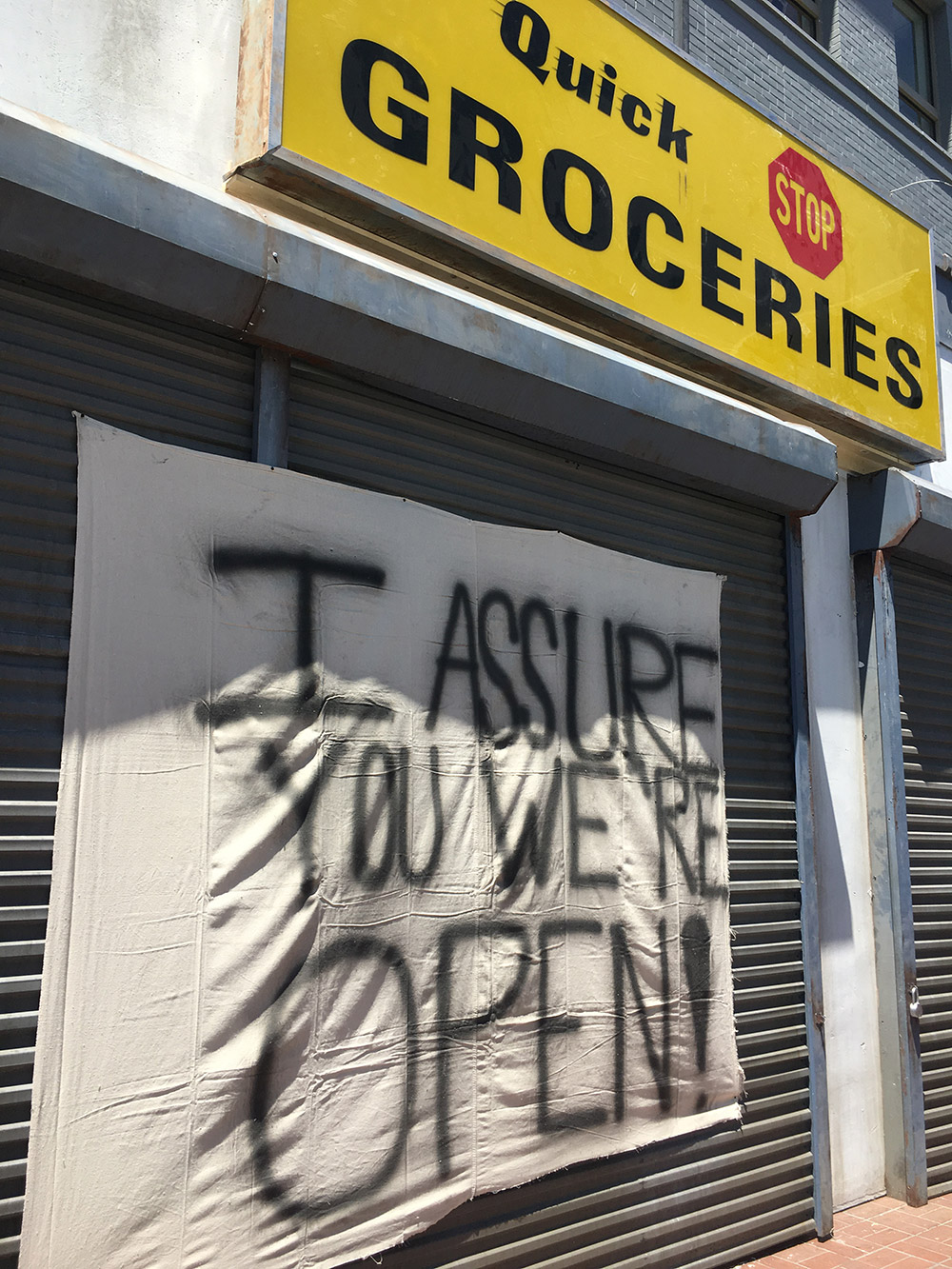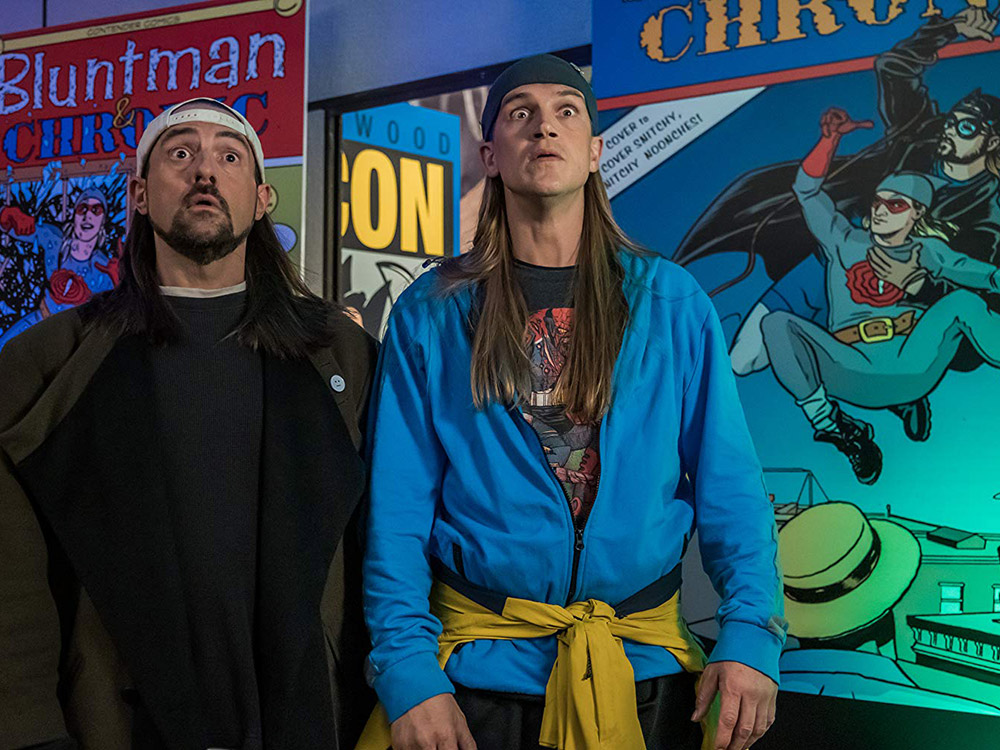When you think of a “shared universe” — particularly a cinematic universe — generally Marvel Studios will be the first thing that comes to mind. Of course, there are others who’ve tried it, with the overall concept of a shared universe (or even multiverse) being a time-honored comic book staple for decades. But on screen, the longest-running cinematic universe isn’t the Marvel Cinematic Universe (MCU), it’s View Askew — and now it’s time for a reboot.
By the time Kevin Smith’s Clerks made its formal theatrical debut in the fall of 1994, it was already a critical darling — well on its way to becoming a cult hit. The film, shot on 16 mm black-and-white Kodak Plus-X stock by an Arri Sr-2 camera, is the stuff of legend — an iconic piece of the independent film boom of the 1990s. Famously self-funded at a cost of $27,575 (largely on Smith’s own credit cards), Clerks was shown at the 1993 Independent Feature Film Market in New York City, setting the wheels in motion for a proper debut at the 1994 Sundance Film Festival, where Miramax acquired it. Following a run on the festival circuit that checked the boxes with the big names, such as Cannes, Chicago, and Toronto, the film scored more than $3.2 million at the U.S. box office — an impressive return after Miramax invested more than $200,000 in finishing funds for post production, largely spent on soundtrack acquisitions from the likes of Alice in Chains, Soul Asylum, Stabbing Westward, and Supernova.
Where Clerks really found its audience wasn’t on the festival circuit, nor was it in theaters. It was at home, in the heartland, where audiences in every small town discovered it on grainy VHS. The simple story — told largely in just two locations: Quick Stop and RST Video of Leonardo, New Jersey — resonated with nearly every viewer who’d ever worked a seemingly dead-end job, dealing with difficult customers for too little money, all while dreaming of bigger things, pursuing higher education, or settling on the fact that maybe this is as good as it gets. Across America, it seemed as if everyone knew a Dante or a Randal, and maybe the movie was a reflection of their own lives.
For years, the talk was always that it was “the dialogue” that made Clerks work, and the same would be said for Smith’s subsequent films, including Mallrats, Chasing Amy, and Dogma — all produced by Smith’s own View Askew Productions.
Somehow, the $27,575 spent on Clerks (plus an investment of sweat equity and time), had spawned a shared universe that was beyond cinematic. Like a smaller-scale mirror of the merchandising juggernaut that George Lucas created out of Star Wars, Smith’s stories spun-off into other mediums, such as television and comics. There would be collectible “inaction” figures, Buddy Christ dashboard statues, T-shirts, hockey jerseys, and replica apparel based on costumes and locations from films set within the growing View Askewniverse.
By the time Jay and Silent Bob Strike Back (J&SBSB) hit theaters in 2001, the title characters played by Smith (Silent Bob) and Jason Mewes (Jay) had progressed from being smalltown pot dealers in Clerks to being cult heroes with shorts on MTV, a cameo in Scream 3 (2000), and a short-lived run in the six-episode Clerks: The Animated Series (which ABC canceled after just two airings). In-universe, they’d also become legendary, serving as the inspiration for a fictional comic book, Bluntman and Chronic, which itself would inspire an equally fictional big budget feature film starring James Van Der Beek and Jason Biggs (hot off of Dawson’s Creek and American Pie, respectively) and Luke Skywalker himself, Mark Hamill, as the villainous Cock-Knocker. The ultimately ahead-of-its time, ultra-meta film would find Jay and Silent Bob racing across the country in hopes of collecting a “movie check,” while taking some major shots at online film fans more than a decade before “toxic fandom” and social media became a regular minefield for every film project to make it through. Of course, the film also inspired real-life Bluntman and Chronic comics published by Oni Press, but that’s a minor footnote in the grand scheme.
Following Clerks II (2006) and Jay and Silent Bob’s Groovy Cartoon Movie (2013), enough time has passed that the world is ready to hit the reset button for the most famous stoners this side of Cheech and Chong.
 After all, in the years post-J&SBSB, Sony and Marvel rebooted Spider-Man twice following Tobey Maguire’s three-film run as the web-slinging Peter Parker; the Fantastic 4 pressed the reset button once (and will probably do so again); the Caped Crusader lent his cape and cowl to Christian Bale, Ben Affleck, and (soon) Robert Pattinson as Batman; and Heath Ledger, Jared Leto, Cameron Monaghan, and Joaquin Phoenix have all played versions of the Joker. And following Dark Phoenix and the Disney acquisition of Fox, it looks like the X-Men will get another reset pretty soon, lest we forget that they’ve already been rebooted once by going back in time. In fact, according to Brodie Bruce (Jason Lee) in J&SBSB, it was the success of X-Men (2000) that prompted Miramax to option Bluntman & Chronic in the first place.
After all, in the years post-J&SBSB, Sony and Marvel rebooted Spider-Man twice following Tobey Maguire’s three-film run as the web-slinging Peter Parker; the Fantastic 4 pressed the reset button once (and will probably do so again); the Caped Crusader lent his cape and cowl to Christian Bale, Ben Affleck, and (soon) Robert Pattinson as Batman; and Heath Ledger, Jared Leto, Cameron Monaghan, and Joaquin Phoenix have all played versions of the Joker. And following Dark Phoenix and the Disney acquisition of Fox, it looks like the X-Men will get another reset pretty soon, lest we forget that they’ve already been rebooted once by going back in time. In fact, according to Brodie Bruce (Jason Lee) in J&SBSB, it was the success of X-Men (2000) that prompted Miramax to option Bluntman & Chronic in the first place.
Jay and Silent Bob Reboot (J&SBR) is the ninth official entry into the View Askewniverse, and one that takes a big swing at remakes, sequels, and reboots — while simultaneously being all three.
The film will be released by Saban Pictures this month.
“In Jay & Silent Bob Strike Back, our herbal heroes found out Hollywood was making a movie based on them, so they journeyed out to Hollywood to stop it,” Smith says. “But I’ve learned so much as a storyteller and have grown immensely as a filmmaker since then, so audiences can expect something completely different. In Jay & Silent Bob Reboot, our herbal heroes find out Hollywood is making a reboot of the old movie that was based on them, so they journey out to Hollywood to stop it again.”
Chronicling the production through a YouTube series, Road to Reboot, Smith’s latest adventure took shape in front of an audience at home — a carefully crafted serving of cinematic comfort food for those of a certain generation. The gang’s all here, and there’s new players that have been added to the mix, particularly from an expanded circle of friends who have come into Smith’s orbit. J&SBR marks the return of Affleck and Jason Lee in roles inspired by the comic book industry, accompanied this time by actors with legit comic book cred, such as Chris Hemsworth (Thor, Avengers), David Dastmalchian (Ant-Man, The Dark Knight), Melissa Benoist (Supergirl), Val Kilmer (Batman Forever), and Joe Manganiello (Spider-Man, Justice League), not to mention that Affleck once played Daredevil in addition to wearing the Bat-cowl a few times in recent years.
The production was an emotional affair, taking place 26 years after the filming of Clerks, and a year after Smith suffered a near-fatal heart attack. Production took place in New Orleans, but thanks to movie magic, it became a throwback to where it all began: New Jersey.
With a modest budget and schedule that wouldn’t allow for a trip to the East Coast, one key location had to be duplicated for filming in the Big Easy: the Quick Stop itself.
“This is crazy,” Smith says, while standing in front of a 45-foot Quick Stop facade, painstakingly recreated by the design team against an empty building. “I didn’t think this was possible — and it’s weird because I work in the movie business where anything is possible with a little f—ing scratch — but some things, you can’t fake in life.”
Holding back tears, Smith explains that this is a moment of paramount significance. “Our movie starts as my entire career started — in front of a little building in Leonardo in what we called ‘the block of stores,’ Quick Stop and RST video,” he says. “You can’t fool me — I’ve been there, I’ve lived there, my f—king career started there, and I’ll probably be buried there. To pull this off, that is the very definition of movie magic.”
In the fourth episode of the Road to Reboot web series, Smith comments that he just wants to take the facade back to Los Angeles — likely with no idea that would actually be possible — but the next time the Quick Stop would be constructed would be a few hours south of L.A., in San Diego.

Comic-Con International: San Diego (SDCC) is a regular stop for Smith and his crew, and the influence of its very existence (and even its logo) are a heavy presence in J&SBR, with the 10th anniversary Hollywood “Chronic Con” being a key location in the film. In July, the Quick Stop opened for business just off the intersection of Fifth Avenue and G Street in the Gaslamp District of San Diego — a temporary side entrance to the TCL Theatre Box, where Smith and Mewes would receive a very “Hollywood” honor as they put their hands into cement to become a part of the permanent display.
The ceremony took place on the Friday afternoon of SDCC, as Smith and Mewes were surrounded by fans, family, and friends. A look around the room revealed familiar faces from where it all began, and what’s come since. Brian O’Halloran (Dante) and Marilyn Ghigliotti (Veronica) from Clerks were in attendance, as was Smith’s long-time friend and Comic Book Men co-star Ming Chen, who viewed the festivities along with Smith’s wife, Jennifer Schwalbach Smith.
“This city is in my DNA and my genetics at this point,” Smith tells the crowd. “To know that there’s a little piece of us that’ll stick behind even when we are not here in town is thrilling.”
The following day, Smith and Co. stepped into the legendary Hall H to give a proper introduction to the film that they’ve been working on all year. Just two days earlier, Smith surprised audiences by dropping the red band trailer for Jay and Silent Bob Reboot ahead of the SDCC festivities, and pulling back the curtain on an unconventional release plan.
On Oct. 15, J&SBR comes to theaters across the country as part of a two-night special engagement by Fathom Events. Then, beginning on Oct. 21, Smith and Mewes take the show on the road for the Reboot Roadshow — a multi-city tour, the first leg of which appropriately kicks off in New Jersey and wraps in Los Angeles this December.
It’s a coast-to-coast trek that mirrors the real life journey of Smith and Mewes in the ‘90s, and it also mirrors the fictional journey that Jay and Silent Bob took in 2001 — and will soon make again.
It’s life imitating art that was inspired by life in a way that fittingly bookends a saga that began with cinematic independence inspired by breaking the rules and just making things happen.
Snoogans.
For movie tickets and event dates, visit rebootroadshow.com

